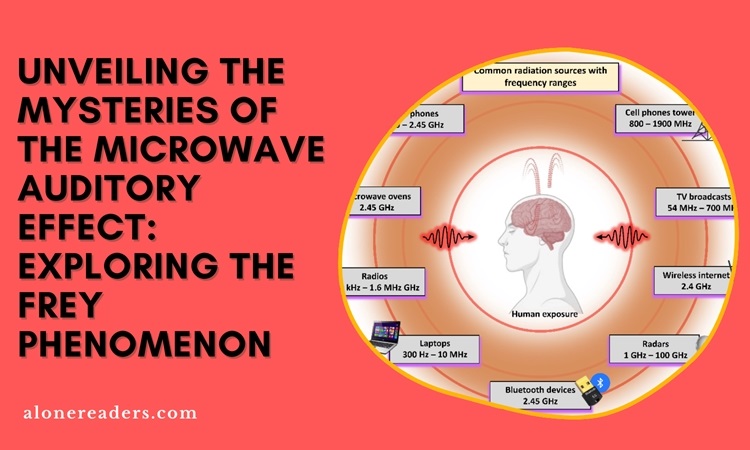
The Microwave Auditory Effect, commonly referred to as the Frey Effect, presents a fascinating yet complex phenomenon where individuals perceive audible sounds, such as clicks, buzzing, hissing, or knocking, without the aid of any electronic receiving device. This effect is induced by pulsed or modulated radio frequencies, making it a unique intersection between the fields of auditory neuroscience and electromagnetic technology. The origins of this phenomenon trace back to the experiences of individuals working in close proximity to radar transponders during World War II, marking the first instances of its occurrence in a real-world setting.
In 1961, the study of this phenomenon took a scientific turn with American neuroscientist Allan H. Frey's groundbreaking research. Frey was the first to systematically investigate and publish information on the nature of the microwave auditory effect. His work paved the way for a deeper understanding of how radio frequencies could interact with the human auditory system in a direct and profound manner.
The underlying mechanism of the Microwave Auditory Effect is thought to be the thermoelastic expansion of portions of the auditory apparatus. This theory suggests that the exposure to certain radio frequencies results in rapid temperature changes within the auditory tissues, leading to their expansion and contraction. This rapid thermal expansion, in turn, generates sound waves that are perceived as the clicks, buzzing, or hissing sounds characteristic of the phenomenon.
However, this explanation is not without its competitors. Other theories have been proposed, especially in the light of results from holographic interferometry tests. These tests, which involve the use of laser beams to detect changes in an object's shape or position, have led to different interpretations of how the microwave auditory effect might occur. Some researchers suggest that the interaction between radio frequencies and the human head could result in complex vibrational patterns, which in turn produce the perceived sounds. Others argue for the involvement of more direct neural stimulation by the radio waves.
Despite these varying theories, the consensus remains that the Microwave Auditory Effect is a real and reproducible phenomenon. Its implications extend beyond mere scientific curiosity. For instance, understanding this effect has significant applications in both military and civilian sectors. In military applications, it's been contemplated as a form of communication or even as a non-lethal weapon. The potential to send clear messages or induce disorienting sounds remotely presents a range of strategic uses.
In the civilian realm, the study of the Microwave Auditory Effect has implications for health and safety. As we increasingly surround ourselves with devices that emit radio frequencies, understanding how these frequencies interact with the human body becomes crucial. This is particularly important in occupational settings where exposure to high levels of radio frequencies is common, such as in certain manufacturing environments or in the vicinity of high-powered radar installations.
Moreover, the phenomenon has sparked interest in the field of neurotechnology, particularly in the development of devices that can exploit this effect for beneficial purposes. For instance, researchers are exploring the use of modulated radio frequencies to create auditory prostheses, providing an alternative to traditional hearing aids. Such devices would bypass the outer and middle ear entirely, directly stimulating the inner ear or auditory nerve.
The investigation of the Microwave Auditory Effect also intersects with broader ethical and societal questions. The possibility of using this technology for covert communication or as a form of crowd control raises important issues regarding consent and privacy. As with many emerging technologies, the balance between beneficial applications and potential misuse remains a delicate and ongoing conversation.
In conclusion, the Microwave Auditory Effect, or the Frey Effect, represents a captivating area of study that bridges neuroscience, physics, and technology. From its initial observation in the context of World War II radar technology to its current exploration in both military and civilian domains, this phenomenon continues to intrigue and challenge researchers. Understanding the intricate mechanisms behind the Microwave Auditory Effect not only advances our knowledge in auditory neuroscience but also opens up new vistas for practical applications, albeit accompanied by necessary ethical considerations. As research continues, we may anticipate further revelations about this remarkable phenomenon and its wide-ranging impacts on society and technology.